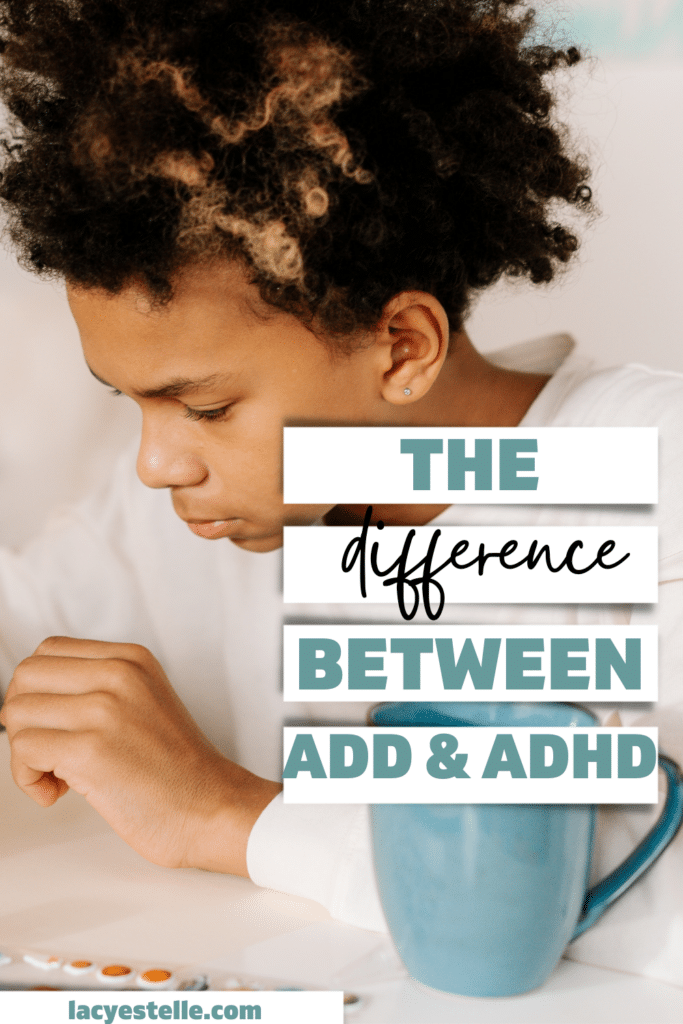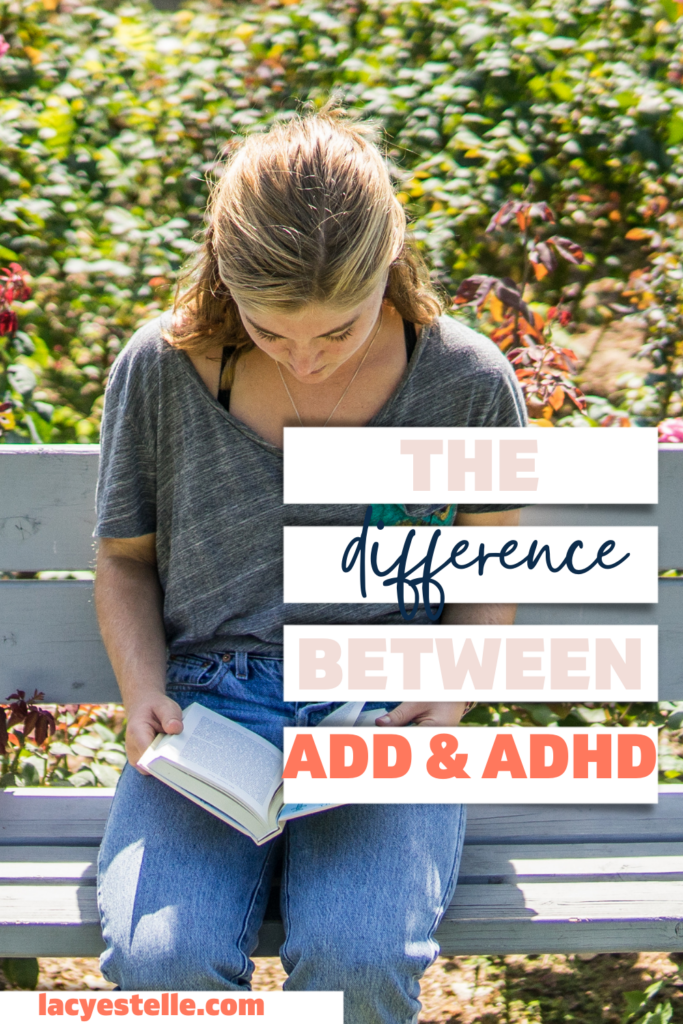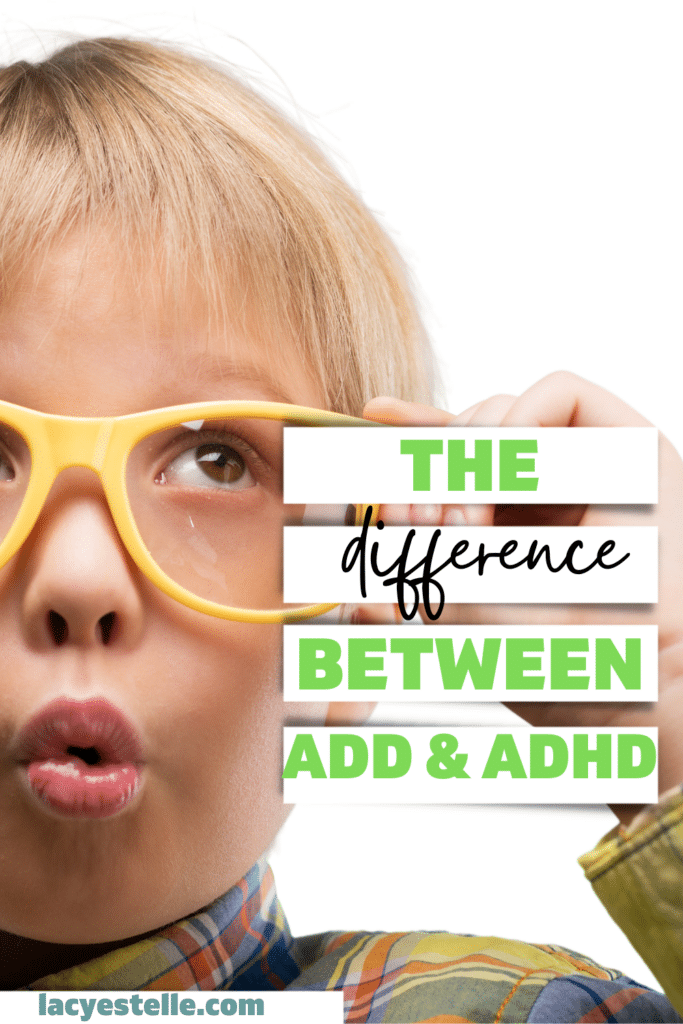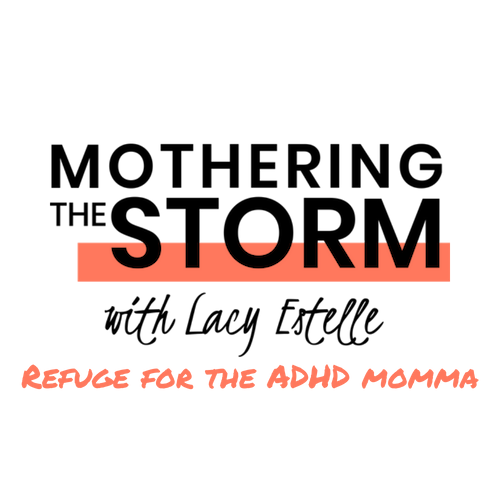This post may contain affiliate links. This means, if you make a purchase from a link on this page, I may receive a small commission at no extra cost to you. You can find our entire disclaimer here.
Tell someone else!
If you are feeling confused about the difference between ADD and ADHD you are not alone! The two are often mistaken for each other or used interchangeably. And it doesn’t help that the definitions of the two similar disorders have changed over time. But no worries, I’m going to clear things up for you!
When it comes to understanding the difference between ADD (Attention Deficit Disorder) and ADHD (Attention Deficit/Hyperactivity Disorder) it is important to remember that each individual is unique. What ADHD looks like in one family may not be how it presents in other families. The subtle distinctions between each case have added to the confusion. But that doesn’t mean that we can’t understand the differences.

Click Here to Join the Mothering the Storm Facebook Group! An Encouragement Group For Parents who have ADHD and are also caring for an ADHD Child!
By giving you a few definitions and recognizable symptoms I am going to help you figure out these confusing terms. Understanding the differences can go a long way in helping yourself or your loved one to get the right treatment. And the right treatment can make all the difference in leading a happy and productive life. I know that from first hand experience!
The Difference Between ADD and ADHD
As I mentioned before, some of the confusion about ADD vs. ADHD comes from the evolution of how these terms have been used by mental health professionals. In 1993, it was decided that both conditions would be referred to as ADHD. Then the professionals realized that there was more nuance to the conditions and they needed to make more distinctions in their definitions.

Currently the DSM (Diagnostic and Statistical Manual of Mental Disorders) distinguishes between three different types of ADHD:
- ADHD predominantly inattentive presentation (previously ADD)
- ADHD predominantly hyperactive-impulsive presentation
- ADHD combined presentation
Are ADD and ADHD the Same Thing?
As you can see, the answer to this question is yes and no. It can be a bit tricky because the definitions have changed over time. Basically ADD is a type of ADHD. ADD is a term used to describe those who have trouble with attention but without the hyperactivity. It can also be harder to diagnose because there are fewer outward symptoms than are found with the hyperactive-impulsive ADHDers.
These three conditions are definitely related. Some of the symptoms overlap while others can be more distinctive. The CDC has put together a list of symptoms for each of the three variations of ADHD. And I have listed the symptoms for you below. Seeing the distinctions between the symptom lists really help in understanding the differences between ADD and ADHD.
ADHD predominantly inattentive presentation
What we used to call ADD, this type of ADHD has symptoms that are related to inattention. This can look like different things in different kids. And sometimes it can be hard to decide if a behavior pattern is a symptom or a personality trait; like with shyness.
- Inattention/ easily sidetracked
- Difficulty completing tasks
- Trouble staying on task
- Has difficulty following through with instructions
- Lack of attention to detail
- May seem like they are not listening even when you are speaking directly to them.
- Has trouble with organization
- Avoids tasks that require mental focus for long periods of time
- Forgetfulness
- Loses things often
- Easily distracted
- Shy/standoffish
ADHD predominantly hyperactive-impulsive presentation
This type of ADHD is a much more physical in nature. That often means that the symptoms are far more obvious. These ADHDers can have problems with attention but are more challenged by staying still and controlling their impulses.
- Fidgeting, squirming, repetitive movements like tapping of the hands and feet
- Physical activity at inappropriate times (such as getting up during meal time or running/climbing during story time)
- Excessive talking
- Has a hard time with quiet activities
- Interrupting people
- Has trouble with waiting and turn taking

ADHD combined presentation
If a person exhibits enough symptoms from both the inattentive and hyperactive-impulsive lists then they are considered to have combined ADHD. The CDC notes that since symptoms can change over time, so can the presentation of the ADHD
What Should I do if I Think My Child or Myself has ADHD?
If you aren’t sure if you or a loved one has ADHD a good place to start is by keeping a record. Spend a couple of weeks keeping track of what symptoms occurred and when. Make note of them and look for patterns. If you notice that several symptoms are occurring often, it may be time to seek out a mental health professional. By having a record of symptoms you will be arming yourself and your health care professional with as much information as possible.
ADHD doesn’t exist in a vacuum and can often go hand in hand with learning disabilities and mental health issues. Much of these are a direct cause of the ADHD itself. This is because experiencing the challenges of ADHD can lead to confusion and frustration.
Feeling out of control and frustrated can lead to tantrums, isolation, anxiety, low self esteem and depression. Some of which can be viewed as behavioral problems if taken individually. But together show signs of a different issue. If ADHD tantrums have you ready to pull your hair out, be sure to check out our post, 5 Ways to Handle ADHD Tantrums.
The Next Steps…

So the bottom line is that ADD and ADHD are similar brain based disorders but they have different symptoms. And, ADD is now referred to as ADHD inattentive instead of ADD. If the symptoms listed above sound all too familiar to you know that you are not alone!
We are here to support you in everyway that we can. After you’ve made your symptom notes you’ll be ready to find a mental health professional that will be a great fit for you family. Having the right doctor can make a world of difference in understanding and treating ADHD!
You’ll also want to have a good personal support system in place. Family and friends who have your best interests in mind are important too. They can be your sounding board, you shoulder to cry on, and your biggest cheerleaders.
Have you or your child been diagnosed with ADHD? Or do the listed symptoms sound familiar? Let me know in the comments below!








